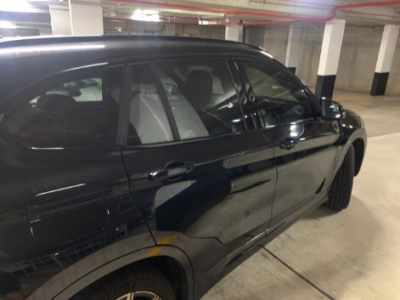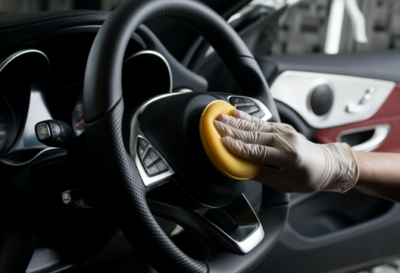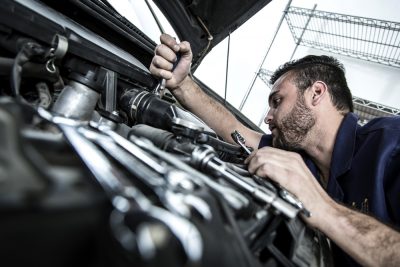- Oneflare /
- Cost Guides /
- Car Window Tinting

How much does it cost to tint car windows?
$200 - $500
What's on this page
- Cost of car window tinting
- Cost to tint a car window based on location
- Cost to tint a car window based on vehicle model or size
- Factors affecting window tinting prices
- Australia’s window tinting laws
- Car window tinting aftercare
- How to save on car window tinting
- Ready to tint your car windows?
Read related articles
How much does it cost to tint car windows in Australia?
In Australia, car window tinting costs vary between $200 and $500, while tinting a single car window costs about $70. Several factors influence these prices, including your location, vehicle’s characteristics, the tint film type, and specific aesthetic features or additions.
Understanding how these factors can impact your window tinting expenses is essential. Being well-informed about Australia’s window tinting regulations, adopting best practices for post-tinting care, and exploring money-saving strategies can help you complete your car window tinting project without breaking the bank.
How much does it cost to tint a car window based on location?
The cost of tinting car windows is typically consistent nationwide. However, price variations may vary on specific factors, like the vehicle’s size and the type of window film you choose. Labour fees may also depend on local service rates, so prices in a highly urbanised area may incur slightly higher rates.
For example, window tinting prices in Sydney may vary slightly from other cities. The table below shows the respective price quotes for each state or territory based on the darkest legally allowed window tint.
| State/Territory | Average cost |
| New South Wales | $250 |
| Queensland | $270 |
| Victoria | $300 |
| Western Australia | $300 |
How much does it cost to tint car windows in Australia based on vehicle models or sizes?
The cost of car window tinting in Australia usually depends on the make and model of the vehicle. Larger cars with more windows, like SUVs, large coupes, and people movers, generally incur higher tinting costs than smaller cars with fewer windows. This is due to the increased amount of film needed to cover all windows in more oversized vehicles.
Moreover, cars with curved or uniquely shaped windows demand special attention during tinting, which can further raise the cost of the service. Below are the estimated car window tinting prices for specific car models.
| Vehicle Model | Average cost |
| Sedan |
|
| Wagon |
|
| SUV |
|
| Small hatch |
|
| Utility vehicles |
|
| Large coupe |
|
| Vans and people movers |
|
Different vehicle types have varying window counts and installation times for tinting. Sedans covering seven windows take one to two hours. Standard 4×4 wagons, with nine to 10 windows, will require about 1.5 to 2.5 hours to tint. Meanwhile, SUVs with seven windows take 2.5 to 3 hours. Hatchbacks, which are smaller with two pairs of windows, take 1 to 2 hours.
For utility vehicles, single cab utes (3 windows) and dual cab utes (5 windows) require 2.5 to 3 hours. Coupes with curved windows range from 2 to 3 hours. Larger vehicles like vans and people movers may need 2 to 3.5 hours for complex tint work.
Keep in mind that the car window tinting price list above is subject to change and will vary on several factors, such as location. You can use this guide as a benchmark for allotting a budget. But for more accurate and up-to-date pricing, it’s best to contact local window tint installers.
Factors affecting car window tinting prices
Type of film
When it comes to the cost of tinting car windows, your choice of tint film will influence the total service cost. Dyed film is the most common and easy on the wallet, but it doesn’t block as much UV light and can lose its colour over time.
In contrast, metalised film is a step up in cost, but it’s better at keeping your car cool and doesn’t fade as fast as dyed film. If you’re looking for a premium option, choose ceramic films. While expensive, it offers the best heat protection and won’t fade away with time.
Number of car windows
Generally, more windows to tint means more money spent. Some car owners decide to tint just their front windshields or the driver and passenger windows, whether for legal or stylistic reasons.
On the other hand, others go all-in and tint every single window, including rear windshields and side windows, for guaranteed privacy and UV defence. It’s your call, but remember, each extra window you tint will bump up the final bill.
UV and heat protection features
Window tinting protects your car from excessive sun exposure. The key game-changer here is the UV and heat-blocking benefits, which determine the cost of your window tint. Expect to dig deeper into your wallet if you’re going for an option that gives you solid 90% heat protection and top-tier UV ray blocking. Such high-performing window tints are packed with cutting-edge technology and materials.
Base materials
For standard car window tints, more common and affordable materials are used, meaning they’re more budget-friendly and won’t break the bank. But if you prefer a metallic or ceramic base, be prepared to shell out 10% to 15% more than the average tinting prices, as these materials are a bit pricier.

Professionally tinted car windows | Source: All Tint Sydney
Australia’s window tinting laws
In Australia, window tinting is generally allowed, but specific regulations can vary by state. For example, in New South Wales (NSW), you cannot use reflective or mirror-like tinted film, spray-on tints, or finishes on your vehicle. An exception is made for a tinted band on the top 10% of your windscreen above the wiper area.
To help you stay on the right side of your area’s car window tinting rules, here’s a list of the legal limits for window tint darkness in each state and territory. Remember that these limits only apply to vehicles with no existing tint.
| State/Territory | Windshield | Front-side | Back-side | Rear |
| ACT | 0% | 35% | 20% | 20% |
| NSW | 0% | 35% | 20% | 20% |
| NT | 0% | 35% | 15% | 15% |
| QLD | 0% | 35% | 20% | 20% |
| SA | 0% | 35% | 20% | 20% |
| TAS | 70% | 35% | 20% | 20% |
| VIC | 0% | 35% | 20% | 20% |
| WA | 0% | 35% | 20% | 20% |
Window tints in Australia are measured in terms of VLT. In most places, having any percentage of VLT on your windscreen, except in Tasmania, is not allowed. However, you can tint your front-side, back-side, and rear windows, as long as your vehicle doesn’t have existing tint.
Remember, the legal VLT limits can vary between states and may be subject to change over time. So, always double-check the latest regulations in your area and know what to look out for when tinting your car windows before proceeding with it.
The dos and don’ts of car window tinting aftercare
Don’t roll down the windows until they are completely dry
Depending on the weather, it might take a couple of hours or even a few days for your window tints to ultimately settle. That’s why keeping your windows up until they are fully dry is best. This way, you ensure the window tint film bonds perfectly to the glass surface.
Do stick to the right cleaning agents
Many typical window tint cleaners have ammonia, which can lead to unsightly streaks and discolouration on your tint. So, skip those and opt for a mix of soap and water for a milder cleaning solution, or go with a cleaner specifically formulated for tinted windows.
Do observe safe cleaning techniques
Opt for a soft cloth or sponge to prevent scratches when cleaning your windows. Wipe gently, using circular motions. Remember that the tint is on the inside, so handle it with extra care.
Don’t be reckless when handling cargo and seat belts
Be careful when loading and unloading items from your car to preserve your newly tinted car windows. Similarly, be mindful when releasing your seat belt, as it can sometimes snap back onto the glass, causing a small but noticeable chip on the window tint’s surface. Retract your seat belt gently as you exit your car to prevent this.
Tips on how to save money on car window tinting
Identify your reasons for tinting your car windows
Whether for UV protection or enhanced privacy, determine your reasons for tinting. Basic tints are cost-effective, while darker and specialised options like reflective, metalised, crystalline, hybrid, and ceramic tints offer increased benefits at a higher cost. Think through your decision, as it can directly affect how much to tint car windows.
Enquire about the cost of tint removal
If your car is already tinted, be sure to ask about removal costs during your quote to avoid expensive surprises. Tint removal requires extra time and resources, incurring an additional fee.
Carefully review your options
Evaluate different tint options based on your vehicle type and protection needs. Research quality brands, seek recommendations, and decide between DIY kits or professional installation for cost-effective choices. Know that leaving the job to the pros ensures the service treatment is done at the highest skill level.
Understand the costs
You should be aware of all the expenses involved in your car window tinting project when estimating how much it costs to tint car windows. Since prices vary based on vehicle and tint type, looking for better deals, opting for higher-quality materials, and hiring reputable car service providers can help you save money in the long run.
Consider opting for specialised tints
Using premium tints enhances your car’s value and provides additional benefits. Ceramic window tints, for example, offer UV protection, temperature reduction, and durability, boosting resale value and ensuring prolonged tint performance. Despite their higher cost, the long-term benefits of specialised tints make them a cost-effective choice.
Ready to tint your car windows?
Knowing Australian car window tinting laws and the cost factors that come with the service should inform you how to tint your car windows. With the right window tint, you’re not just upgrading your car’s look but also enhancing your comfort and privacy.
For a seamless, top-notch tinting experience without the hassle of doing everything on your own, consider reaching out to a car window tinting professional. Getting help from the experts can save you time and spare you from unexpected expenses with this easy car makeover. If you need to get more than a tint, you should see an expert mechanic to get your car checked.
* The cost data is based on Oneflare and third-party sources
FAQs on car window tinting
What is car window tinting?
Is the car window tinting cost in Sydney worth it?
What is the darkest legal tint in Australia?
How long does car window tinting take?
Real Oneflare customer quotes
Dean's Car Window Job
Job Type
Car Window Tinting
Windows to be tinted
Front-side and back-side windows
Car Make and Model
Nissan X-Trail
$220inc. gst
Quoted by Alltintsydney
Voula's Car Window Job
Job Type
Car Window Tinting
Windows to be tinted
Front, back and back-side windows
Car Make and Model
BMW 120i
$265inc. gst
Quoted by Happy Tint
Marcus's Car Window Job
Job Type
Car Window Tinting
Windows to be tinted
Front-side and back-side windows
Car Make and Model
Mitsubishi Lancer
$250inc. gst
Quoted by Tintacar Victoria Park


